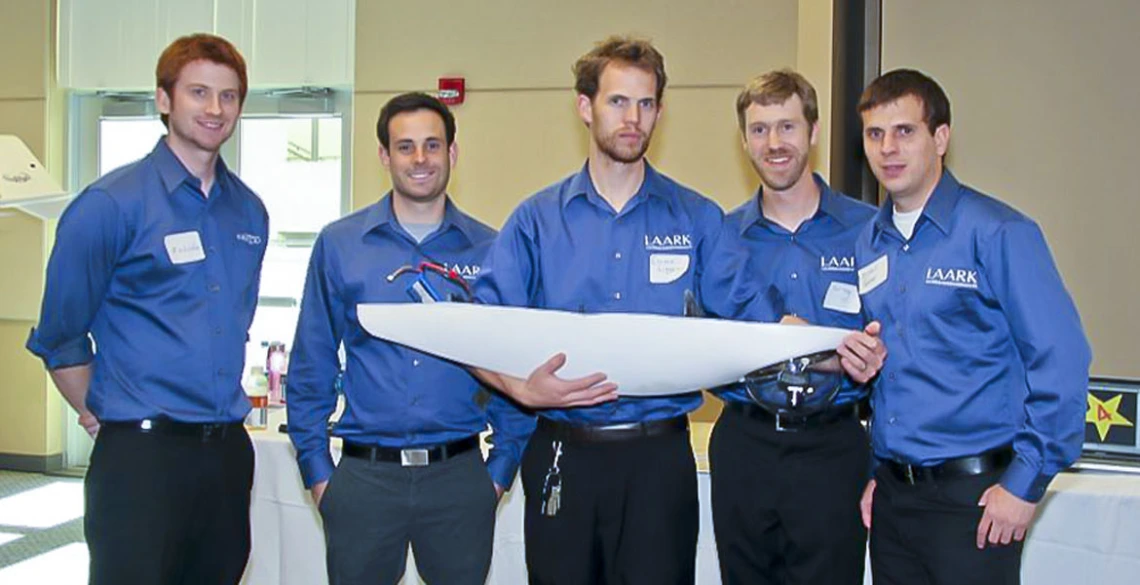Award-Winning UA Aerial Robotics Club Takes First Shot at National Competition
Combined UA Aerial Robotics Club and LAARK team is one of only a few to finish in the competition's top ten as a first-time competitor.

The LAARK design team, pictured here at Engineering Design Day in May 2011, consists of, from left, aerospace and mechanical engineer Malcolm Gibson, systems engineer James Dianics, electrical engineers Elliott Liggett and Hans Hony, and optics engineer Michael Palmer.
After winning the award for best overall design at Engineering Design Day 2011, the LAARK team modified their design and test flew the new unmanned aircraft, and then loaded aircraft and ground systems into an RV for the three-day drive to Maryland for an international competition.
LAARK stands for Low Altitude Aerial Reconnaissance Kit, and students from the UA Aerial Robotics Club headed to Webster Field in southern Maryland for the 9th annual Student Unmanned Aerial Systems Competition on June 15-19, organized by the Association for Unmanned Vehicle Systems International.
The LAARK team placed 2nd in the presentation category, and was still waiting for its journal paper score to be posted at press time. Unofficial results show the UA team placing 9th out of 22 national and international teams. The LAARK team bagged $3,000 in prize money for its performance; the total purse at the five-day competition was more than $70,000.
UA Aerial Robotics Club and LAARK team member Malcolm Gibson, an aerospace and mechanical engineering student, said the UA team was one of only a few teams to finish in the competition's top ten as a first-time competitor.
"We also were the only team to have a machine vision computing cluster and machine vision algorithms capable of completing all of the target analysis requirements of the competition," Gibson said.
Gibson said that although most participants agreed that the UA had the slickest aircraft with the nicest design, the newly designed system suffered a software glitch that prevented it from completing all the mission tasks. The aircraft was not able to send images down to the team stationed on the ground for real-time object recognition. The team was unable to acquire all of its gathered imagery until after landing, with only two minutes left on the clock to search the images.
"In the end, had we not had the mishap, we are confident that we easily could have placed in the top three," Gibson said. "Currently, we are discussing logistics to get a new competition team started for next year's competition."
The AUVSI Foundation is a charitable organization that provides students with the opportunity to experience hands-on robotics activities that advance education in science, technology, engineering and math.
Unofficial finishing positions
1 - Utah State University FOSAM
2 - North Carolina State University
3 - Sherbrooke University (Canada)
4 - United States Air Force Academy
5 - California State at Northridge
6 - University of California at San Diego
7 - Delhi Technical University (India)
8 - Kansas State University
9 - University of Arizona
10 - M.S. Ramaiah Institute of Technology (India)
11 - Utah States University ROSAM
12 - Cornell University
13 - Virginia Commonwealth University
14 - Mississippi State University
15 - Bucknell University
16 - Embry Riddle Aeronautical University
17 - Florida International University
18 - Great Mills High School
19 - Rutgers University
20 - University of Texas at Austin
21 - University of Texas at Arlington
22 - Wentworth Institute of Technology

